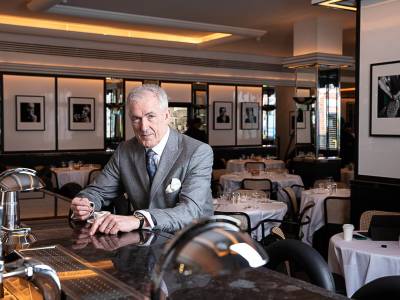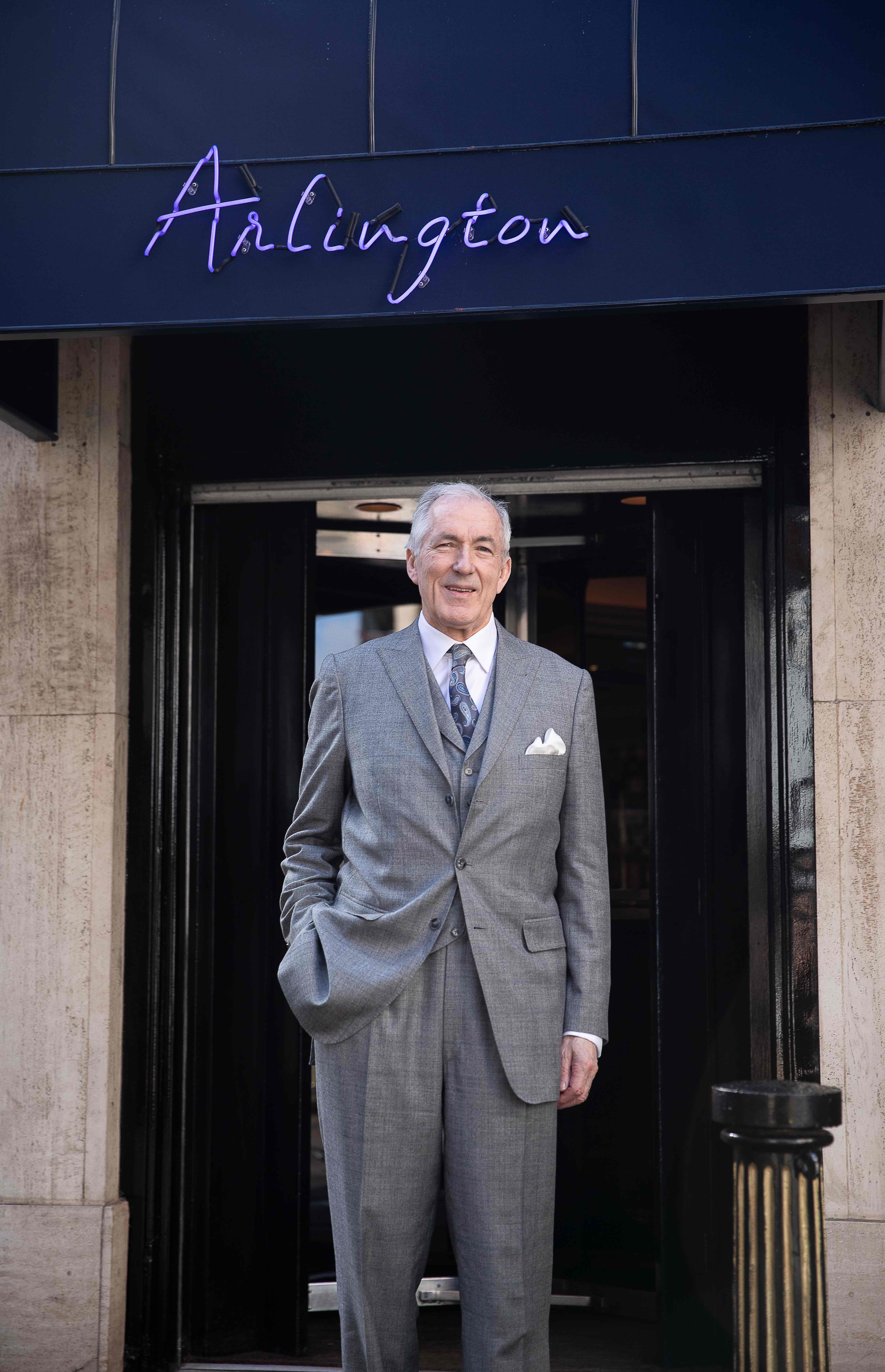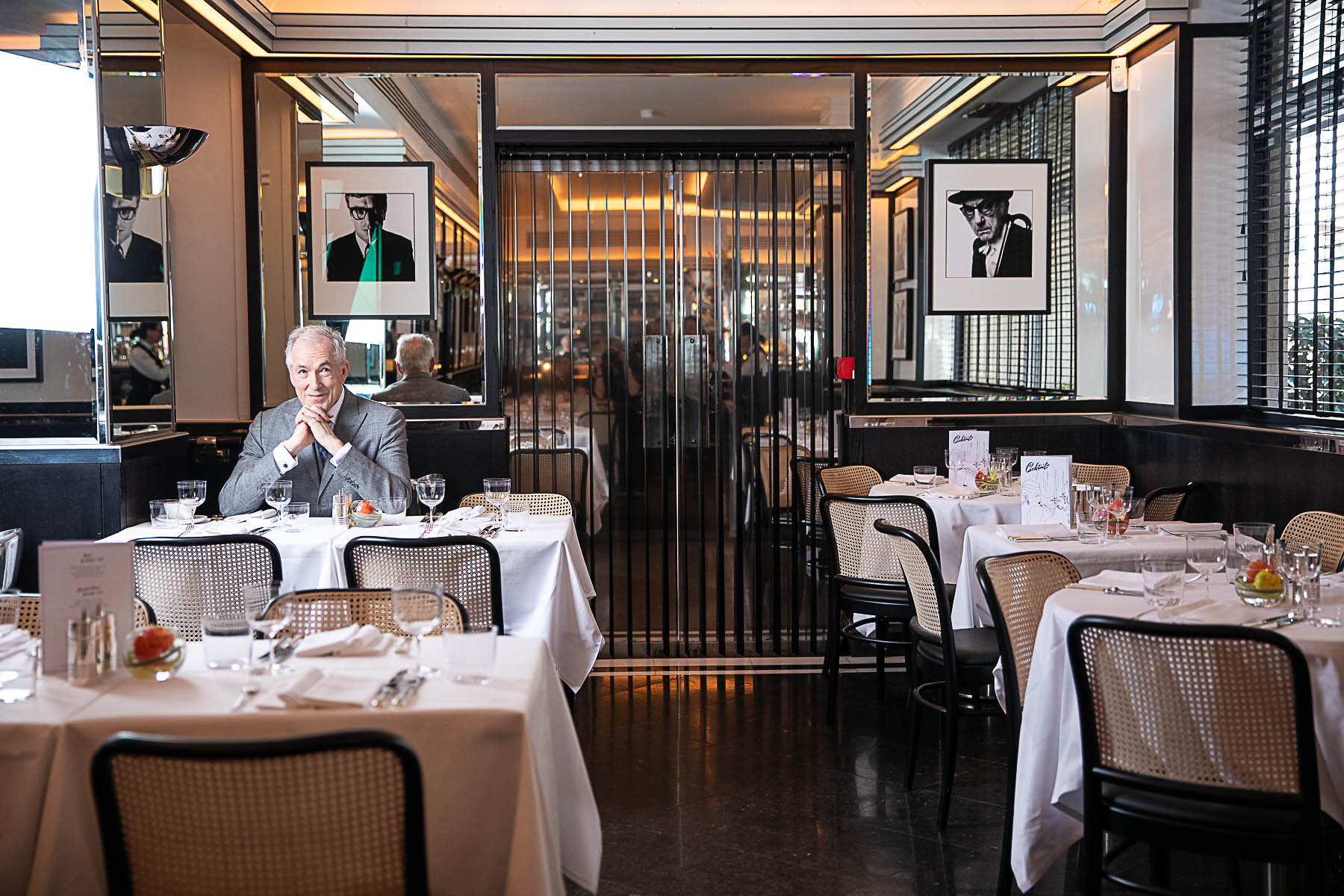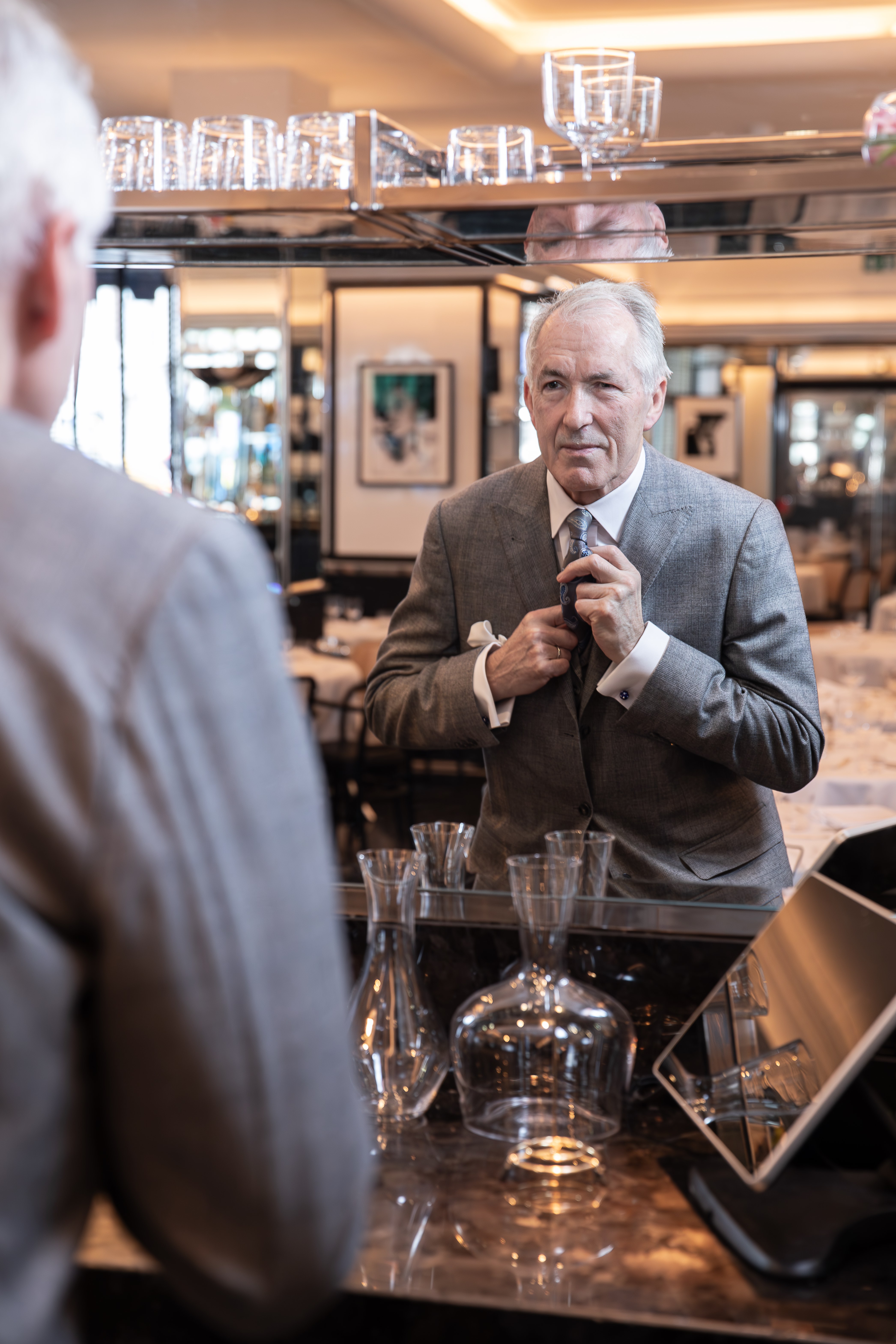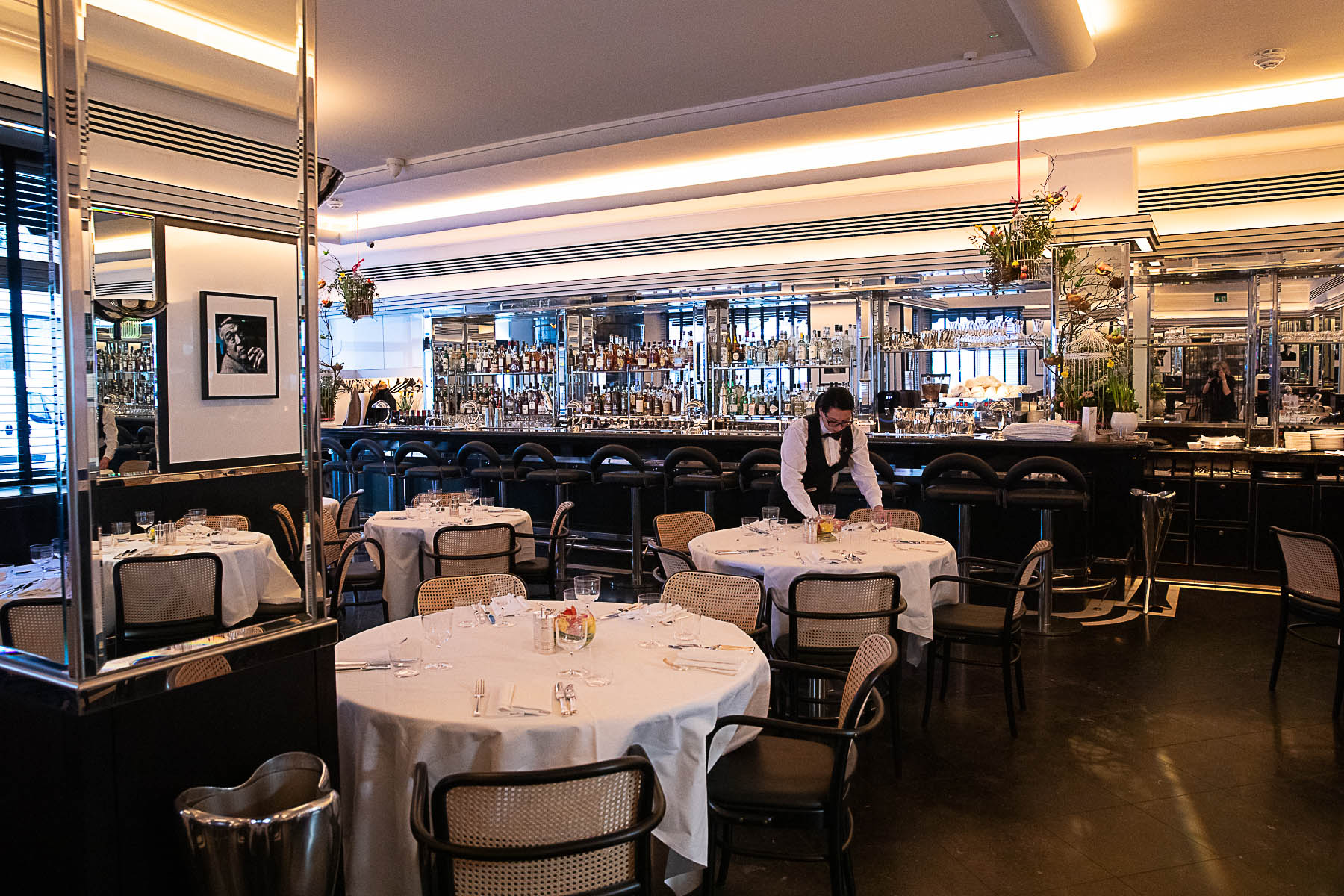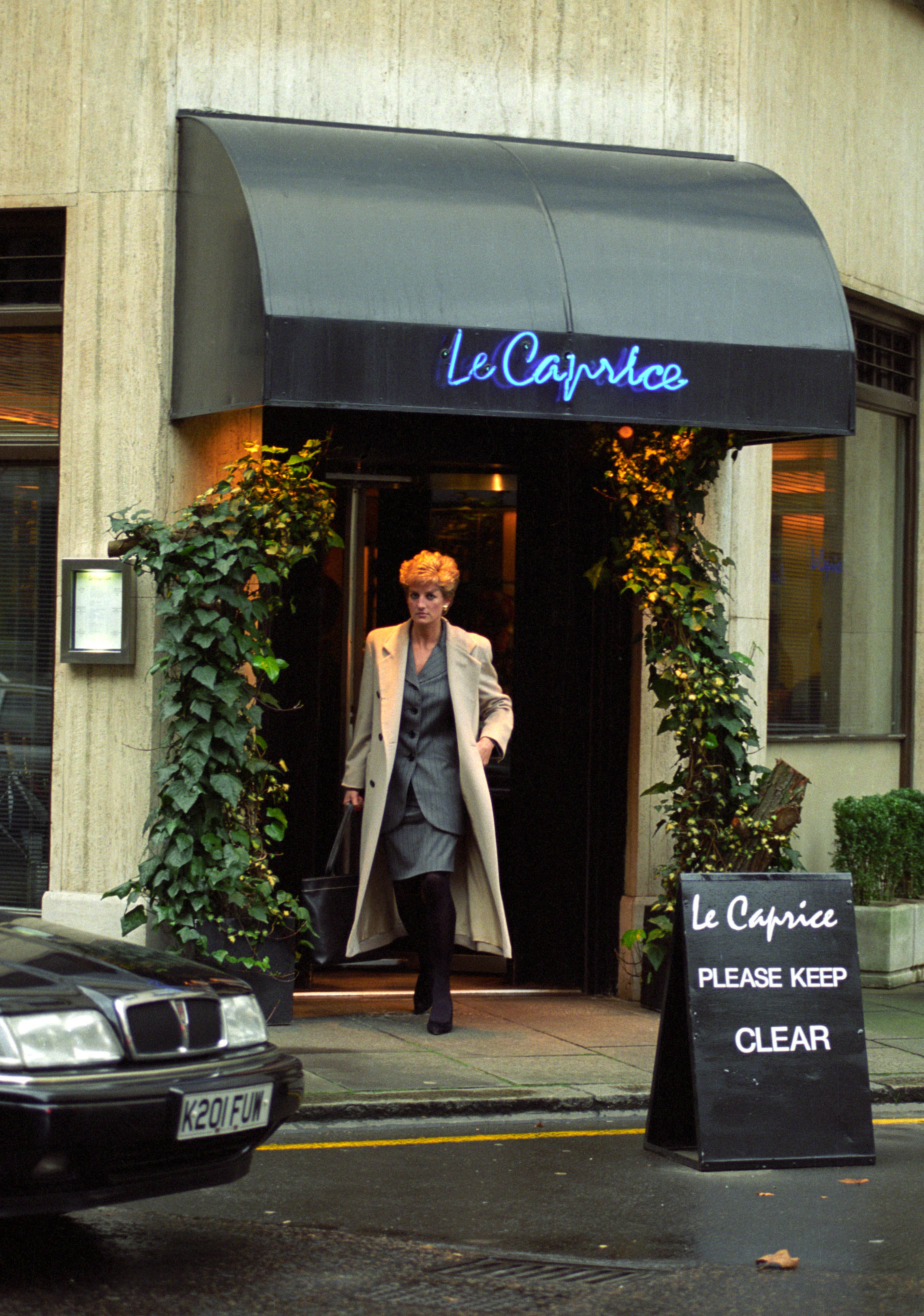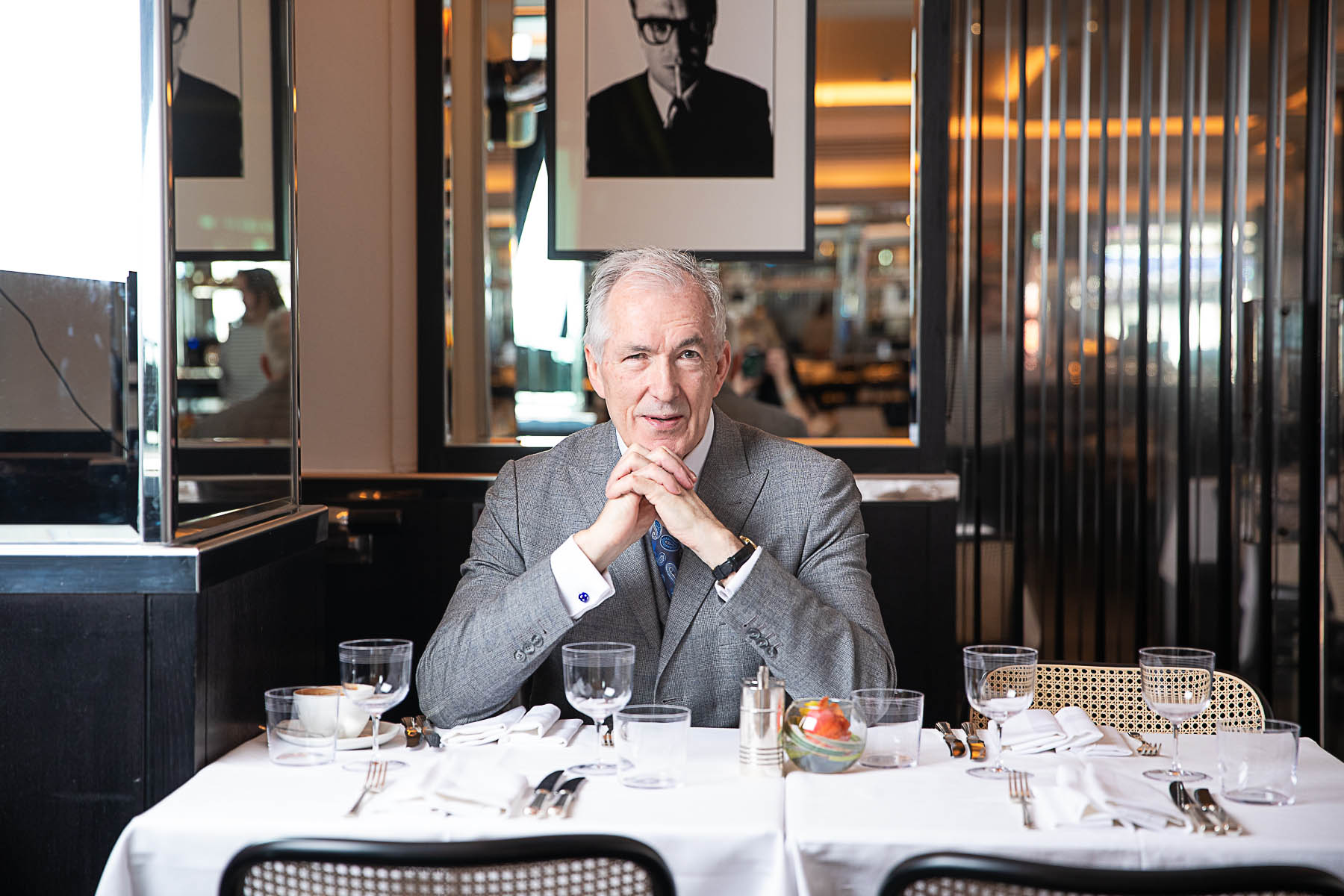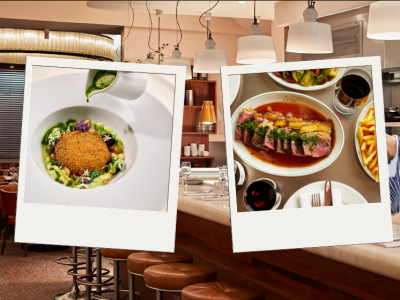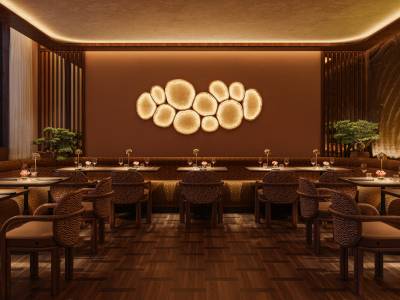It’s rare that a restaurateur will suggest meeting in a rival’s restaurant, particularly when they have a new place of their own to show off. Jeremy King, however, is the rarest of restaurateurs, responsible for the heydays of Le Caprice, The Ivy and The Wolseley, the seminal London dining rooms of the 1980s, 90s and 2000s, respectively. And with three restaurants opening in the capital this year alone, King is set to repeat the hat-trick for the 2020s, too.
We meet in Maison François in St James’s. King’s first new restaurant that we’re here to talk about is Arlington, which is new only in the sense that the relaunch of Le Caprice, now safely back under King’s ownership after being closed during the pandemic by Richard Caring, chairman of Caprice Holdings, has a new name since opening its doors in March. So why are we round the corner in Maison François? “I think that François O’Neill, the owner, is a kindred spirit,” King says. “And I like restaurants that have booths and corner tables. The whole point about being a restaurateur is to create restaurants you’d like to go to yourself.”
